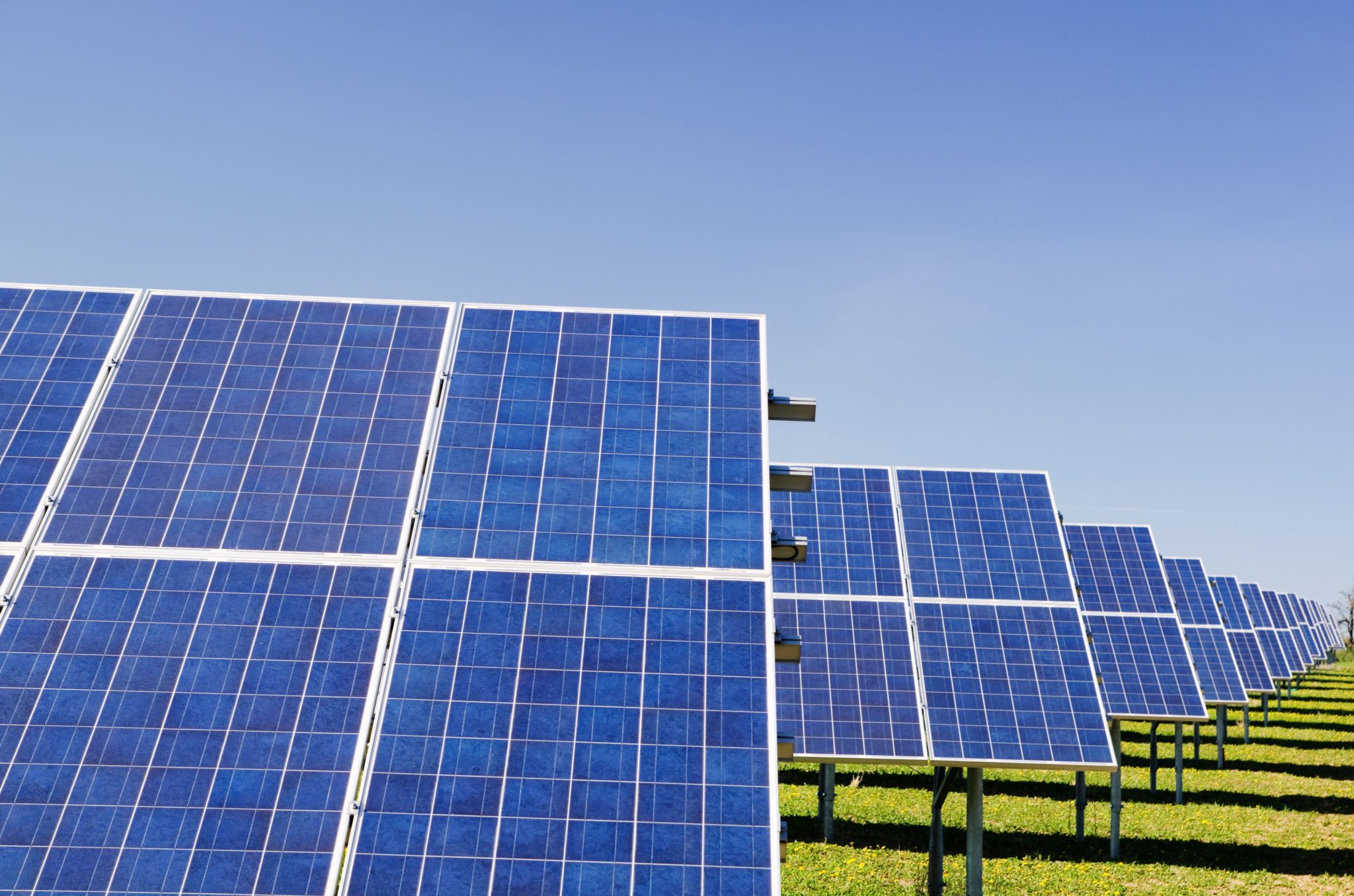
Released last September, the much-awaited regulations for the SMART program, will impact solar development in Massachusetts for the coming years. The new program is complicated, so to make it easier to understand we answered eleven of the most common questions we heard about SMART.
- What is SMART?
SMART stands for Solar MAssachusetts Renewable Target.
It is the latest of a series of state-run programs to incentivize solar development in Massachusetts. The first, called the SREC (Solar Renewable Energy Credit) program, was launched in 2010. The second program, SREC-II was launched in 2014 after the initial SREC hit its limit of how much incentives it could provide. Incentives from both programs are the primary reason Massachusetts has 2,200 MW of solar deployed at the time of publication.
The SREC-II program hit its limit on the number of solar units it could provide incentives to in 2016, making it necessary for the state to come up with a new program.
- How does SMART work?
In the early stages of developing SMART, the Baker administration hoped to create a “next generation incentive program.” To some extent they did this. The mechanism used by SMART is mostly unique to Massachusetts, and is very different from how the SREC programs previously incentivized to solar customers.
SMART features a flat rate paid by utilities (National Grid, Eversource, etc.) to the owner of a solar array. The rate is per kilowatt hour of energy, and stays the same over the course of ten years. Therefore the utility pays the owner of the solar array every time electricity produced by it is sent to the electric grid.
The rate paid by utilities for the solar energy is calculated in a number of ways. We won’t get into all the complexities here, but there are two key takeaways from how this rate is set.
First, solar panel owners are assigned a certain ‘base rates’ for their solar electricity. This rate varies depending on which utility area your panel is in, and how soon you apply for incentives under the SMART program. Areas serviced by National Grid have a lower base rate than those serviced by Eversource (mostly due to greater demand). Also those who apply for the program sooner, get a higher rate than those that apply later, because the base rate reduces automatically over the course of the program.
Second, the base rate a solar array owner gets is also influenced by the ‘adders’ she qualifies for. Adders are conditions that if a solar project meets will add or subtract to the rate the owner gets paid. Adders provide an added incentive for projects that do things the state wants, and a disincentivize to those that do things they don’t want.
For example, an adder is applied if a panel project is built on a less-than-pristine site, like on a rooftop, over a parking lot, or on a landfill. Compare this to projects built on agricultural or previously forested land, which receive ‘subtractor’ (reducing the base rate initially given). Adders are also given to solar projects that pair their solar with storage.
Solar array owners get paid through a new on-bill crediting mechanism. This allows solar energy producers to reap more of the benefits of their contribution to the grid than SREC.
Finally, the state is only authorized to give SMART incentives to the first 1,600 MW of solar projects approved. Additionally, only arrays smaller than 5 MW qualify for SMART rates, and rates are paid for a maximum of ten years only. All solar projects whether commercial, residential, or government qualify for some type of SMART incentives.
- How was SMART developed?
Following the maxing out of the SREC-II program, the Massachusetts legislature in 2016 authorized the state to allow an additional 1,600 MW of solar incentives.
In the years that followed, the Baker administration then used this legal authority to develop draft regulations in the spring of 2017. Various stakeholder meetings and working groups made recommendations that were adopted by DOER, including allowing shared-community solar to qualify for some adders.
Before submitting the final version of the regulations, the DOER held an initial auction to set the base rate (see question #3 for more information on base rates). This was done by having larger solar developers submit proposals for projects and selecting the most competitive of these. The price per kilowatt hour of those selected projects then formed the basis for the base rate in each utility service territory.
After further revisions, the final regulations were sent to the state’s Department of Public Utilities (DPU) for approval, which was given on Wednesday.
While before the DPU, utilities tried to make further changes to the SMART regulations. They proposed a cap on the amount of on-bill credits customers using shared-community solar would receive, which the DPU struck down. The utilities also proposed creating a fixed charge on all ratepayers to pay for the program, but the DPU instead opted for a volumetric charge. There reasoning was that a volumetric charge (one based on the amount of energy used) put less of a financial burden on ratepayers.
- How does SMART impact state energy policy goals?
With SMART the Massachusetts energy portfolio will hit 3,800 MW in solar capacity, enough to meet 10% of the state’s annual electricity needs met with solar. Beyond this, SMART will get the state’s solar industry back on track, will help incentivize the deployment of battery storage technology, and will contribute to shared-community solar in the state.
Historically Massachusetts was a national leader on solar, but over the past two years industry developed slowed dramatically. The reason for this was the slow rollout of the SMART program and the decline of net metering as an option for homeowners. With clear solar incentives now in place the industry should be able to move back towards where it was in pre-2016.
The program will also play a role in incentivizing solar projects paired with energy storage. Solar project owners receive an adder (a higher rate) if they pair their project with energy storage, most likely in the form of electric batteries. This storage would help utilities meet peak demand through solar as opposed to using high-emissions fuels like coal or oil, which were used during previous peak demand periods.
SMART will also help to open up solar for the 75 percent of residents in the Commonwealth who can’t place solar on their roofs. These people ate renters or do not own their homes, leaving them with little options for going solar except for buying into a shared solar project.
- How does SMART differ from previous solar incentive programs?
As mentioned in the answer to question #1, SMART will replace the SREC program and be based on a very different incentive mechanism. In the past, a solar owner had two streams of revenue for their panels. The first was SREC credits, which were sold in a market to utilities to meet their requirements under the renewable portfolio standards (RPS). The second was through net metering, where customers could sell back excess energy to the electric grid for a credit on their bill. SMART essentially combined the two revenue streams into one, with solar owners being compensated a fixed rate for the amount of solar they produce.
This results in a number of things. First, because the SMART provides much more predictable revenue than SRECs, whose prices could vary from $80 to $350 and were dependent on a relatively volatile market. And second, SMART will offer less money to solar developers than they got under either SREC program. This will save ratepayers $4.7 billion compared to the previous program.
- What are the benefits & drawbacks of SMART?
The benefits include:
- A stable and predictable price for solar customers.
- The ability for policymakers to incentivize good solar placement.
- A significant share of new projects will likely be paired with energy storage projects.
Drawbacks include:
- SMART will offer less money to solar developers than the SREC programs.
- High demand will leave the project without enough available capacity in some areas by as early as mid-2019.
- What are people sayings about SMART?
Solar developers seem to have mixed feelings about SMART. On the one hand, the slow rollout has severely affected the industry, leading to thousands of jobs being shed amidst uncertainty over an implementation timeline. On the other hand, developers are eager to move forward on the hundreds of stalled projects across the state.
Solar activists are mostly glad to see SMART finally launch, but are wary of whether it will do enough to promote solar across Massachusetts. They too cite the hundreds of large projects stalled, and hope for a speedy implementation of the program. Many are also taking time to study the details of SMART, and considering its impact on shared-community solar before taking a stance.
- What does SMART mean for solar owners? What does SMART mean for solar developers?
Current solar owners will not be impacted by SMART, and will continue receiving compensation from SRECs and net metering (if they already did so). Future residential solar owners will need to consider a developers knowledge of SMART when choosing a provider for them. This will create a greater demand in the industry for people who understand how SMART works, and how they can best arrange solar projects to fully take advantage of adders.
For commercial-scale solar developers the pressure to submit projects early, so as to get a higher base rate, will be a defining characteristic of SMART. This will likely leave some prospective solar owners, like colleges and other large institutions, unable to act quick enough to take full advantage of a competitive incentive.
- How does SMART relate to net metering?
One some level SMART is meant to replace net metering as a standalone policy. SMART combines the two streams of revenue previously available to solar owners, SREC credits and net metering and replaces it with an all-in-one compensation that combines the two. Smaller projects would technically net meter, but the amount of their net metering would be factored into their rate.
- What is the SMART timeline?
- July 2016– legislators authorize SMART
- Spring 2017– DOER issues emergency regulations for SMART
- Summer 2017–DOER finalizes SMART regulations
- September 2018–DPU approves final SMART regulations
- Winter 2018– DPU decided who owns capacity rights for ISO-NE market
- 2019/2020– regulators begin considering SMART 2.0
- What comes after SMART?
Regulators and state solar policymakers have not offered a clear vision of what will happen post-SMART. What is clear is that SMART’s 1,600 MW capacity cap will be hit in at least two years. Once this happens lawmakers will likely need to scramble to authorize additional capacity.
Even when this happens there is a lot of uncertainty about what a SMART 2.0 would look like. Will the DOER need to have another competitive auction? Will the base rate continue declining where SMART’s ended?
The certainty that SMART’s fixed rate brings to solar developers will likely be counteracted by these and other questions about what SMART 2.0 will look like. Meanwhile, in the period between SMART and its successor the overall solar industry and job growth in clean energy will likely remain stagnant.


